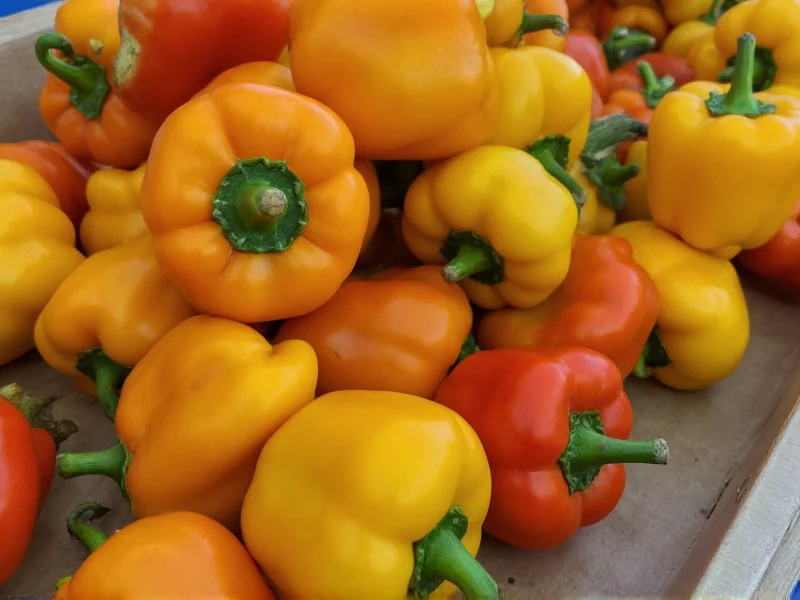Understanding where Hatch peppers fall on the Scoville scale helps home cooks and chili enthusiasts make informed decisions about their culinary applications. Unlike standardized commercial peppers, Hatch chiles exhibit notable variation in heat intensity while maintaining their distinctive flavor profile.
What Is the Scoville Scale?
Developed by pharmacist Wilbur Scoville in 1912, the Scoville scale measures the pungency or 'heat' of chili peppers and other spicy foods. The scale quantifies capsaicin concentration—the chemical compound responsible for the burning sensation—using Scoville Heat Units (SHU).
The original Scoville Organoleptic Test involved diluting pepper extract in sugar water until the heat became undetectable to a panel of tasters. Modern testing uses high-performance liquid chromatography (HPLC) for precise capsaicin measurement, then converts results to Scoville units for consumer understanding.
Hatch Peppers: Regional Specialty with Variable Heat
Grown primarily in the Hatch Valley region of New Mexico, these chiles have earned Protected Geographical Indication status. The term 'Hatch peppers' refers to several New Mexico chile varieties cultivated in this specific region, including 'Sandia,' 'Big Jim,' and 'Joe E. Parker' cultivars.
What makes Hatch peppers unique isn't just their terroir-driven flavor but their remarkable heat variability. Unlike standardized supermarket peppers, Hatch chiles naturally fluctuate in spiciness based on:
- Soil composition and mineral content
- Water availability during growth
- Sun exposure and temperature fluctuations
- Ripeness at harvest (green vs. red)
- Specific farm practices
| Pepper Variety | Scoville Heat Units (SHU) | Heat Comparison |
|---|---|---|
| Hatch Green (mild) | 1,000-2,500 | Slightly hotter than banana peppers |
| Hatch Green (medium) | 2,500-5,000 | Similar to poblano peppers |
| Hatch Red (hot) | 5,000-8,000 | Nearly as hot as serrano peppers |
| Jalapeño | 2,500-8,000 | Overlaps with medium to hot Hatch |
| Serrano | 10,000-23,000 | Significantly hotter than most Hatch |
Factors Influencing Hatch Pepper Heat Levels
Several key factors determine where specific Hatch peppers fall within their Scoville range:
Ripeness Stage
Green Hatch peppers (harvested early) typically range from 1,000-5,000 SHU, while fully ripened red Hatch peppers often reach 5,000-8,000 SHU. The ripening process increases capsaicin concentration as the pepper matures.
Seasonal Growing Conditions
Drought-stressed plants often produce hotter peppers as a defense mechanism. The 2022 Hatch growing season produced notably milder peppers due to abundant rainfall, while the 2021 season yielded significantly hotter varieties following drought conditions.
Specific Cultivar Differences
Within the Hatch designation, different cultivars exhibit characteristic heat levels:
- Big Jim: Typically milder (1,000-3,000 SHU)
- Sandia: Medium heat (3,000-6,000 SHU)
- Joe E. Parker: Can reach upper range (5,000-8,000 SHU)
Culinary Applications Based on Heat Level
The Scoville range of Hatch peppers makes them remarkably versatile in cooking. Chefs and home cooks can select specific heat levels for different applications:
- Mild Hatch (1,000-2,500 SHU): Ideal for stuffed peppers, sauces where flavor dominates, and dishes for heat-sensitive palates
- Medium Hatch (2,500-5,000 SHU): Perfect for salsas, enchilada sauces, and roasted pepper sandwiches where balanced heat is desired
- Hot Hatch (5,000-8,000 SHU): Best for adding noticeable heat to stews, chili, and hot sauces while maintaining distinctive flavor
Professional chefs often blend different heat levels of Hatch peppers to achieve complex flavor profiles with controlled spiciness—a technique known as 'heat layering' in Southwestern cuisine.
How Hatch Peppers Compare to Other Common Varieties
Understanding where Hatch peppers sit relative to other chiles helps contextualize their Scoville measurement:
- Compared to Jalapeños: While jalapeños have a similar upper range (2,500-8,000 SHU), Hatch peppers generally offer more consistent flavor complexity with less unpredictable heat spikes.
- Compared to Poblanos: Poblanos (1,000-2,000 SHU) are typically milder than medium-hot Hatch varieties, making Hatch a good substitute when more heat is desired.
- Compared to Anaheim: Anaheims (500-2,500 SHU) are generally milder than most Hatch peppers, though high-heat Anaheims can overlap with mild Hatch varieties.
Unlike many commercial peppers bred primarily for consistent heat, authentic Hatch chiles celebrate their natural variation as part of their regional character—a quality appreciated by culinary professionals seeking distinctive flavors.
Practical Tips for Working with Hatch Peppers
When cooking with Hatch peppers, consider these evidence-based recommendations:
- Always taste a small piece before incorporating into recipes to gauge actual heat level
- Remove seeds and white membranes for significantly reduced heat (where 80% of capsaicin concentrates)
- Roasting Hatch peppers not only enhances flavor but can slightly reduce perceived heat through chemical changes
- When substituting Hatch for other peppers, start with 25% less quantity and adjust to taste
- Freezing roasted Hatch peppers preserves both flavor and heat characteristics for year-round use











 浙公网安备
33010002000092号
浙公网安备
33010002000092号 浙B2-20120091-4
浙B2-20120091-4